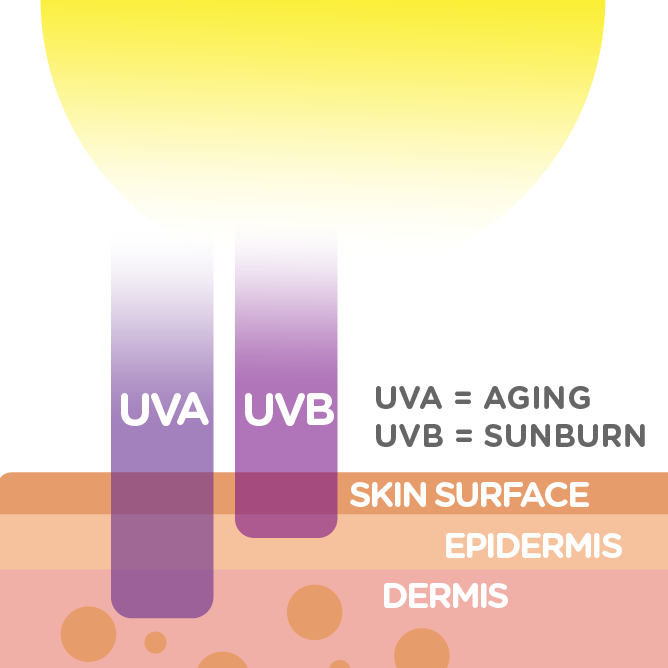What Causes Skin Cancer
85% per cent of skin cancers are associated with exposure to ultraviolet (UV) radiation from the sun or tanning beds.
What Are UV Rays?
UV rays (short for ultraviolet rays) are a type of invisible energy that comes from the sun and other sources, like tanning beds. According to the World Health Organization (WHO) ultraviolet radiation (UVR) is a main cause of skin cancer and accounts for 85% of melanoma cases in Canada.
UV rays are part of the light spectrum, but unlike visible light, we can’t see them. There are three types of UV rays: UVA, UVB, and UVC. Here’s how they differ:
- UVA rays: The most common type, these penetrate deep into the skin, causing long-term damage like wrinkles and aging. (Think “A” for aging)
- UVB rays: Stronger than UVA, these cause sunburns and play a major role in skin cancer and melanoma. (Think “B” for burns)
- UVC rays: The most dangerous type, but luckily, the Earth’s atmosphere absorbs them, so they don’t reach us.
In Canada between April and September, peak times for UV exposure are from 11a.m to 3p.m. This is when the UV index is 3 or more.

Why Should We Care About UV Rays?
Did you know that 80% of an individual’s lifetime sun exposure occurs before the age of 18? Overexposure can lead to:
-
- Sunburns: Painful redness and swelling of the skin.
-
- Skin damage: Premature aging, wrinkles, and spots.
-
- Eye damage: Cataracts and other vision problems.
-
- Increased risk of skin cancer: Prolonged UV exposure can damage the DNA in skin cells, leading to serious health concerns.
How Can We Protect Ourselves?
Just one blistering sunburn in childhood can double the risk of developing melanoma. Since children spend so much time outdoors, staying safe in the sun is especially important! Here are some tips:
- Wear sunscreen: Use a broad-spectrum sunscreen with SPF 30 or higher, and reapply every two hours or after swimming.
- Seek shade: Take breaks under trees, umbrellas, or tents —, especially during midday when UV rays are strongest (10 a.m. to 4 p.m.).
- Cover up: Wear a wide-brimmed hat, sunglasses with UV protection, and lightweight long-sleeved shirts and pants.
- Check the UV index: The UV index measures the strength of the rays each day. A higher number means you need to take extra precautions!
- Stay hydrated: Protecting your skin isn’t the only priority — drinking water helps your body stay cool and healthy.
Fun Fact: Did you know that UV rays can reflect off surfaces like water, sand, and even snow? That’s why protecting yourself is important even in the shade or on cloudy days.
By learning about UV rays and taking the right precautions, you can enjoy the great outdoors safely. Together, let’s make sun safety a priority for everyone!
